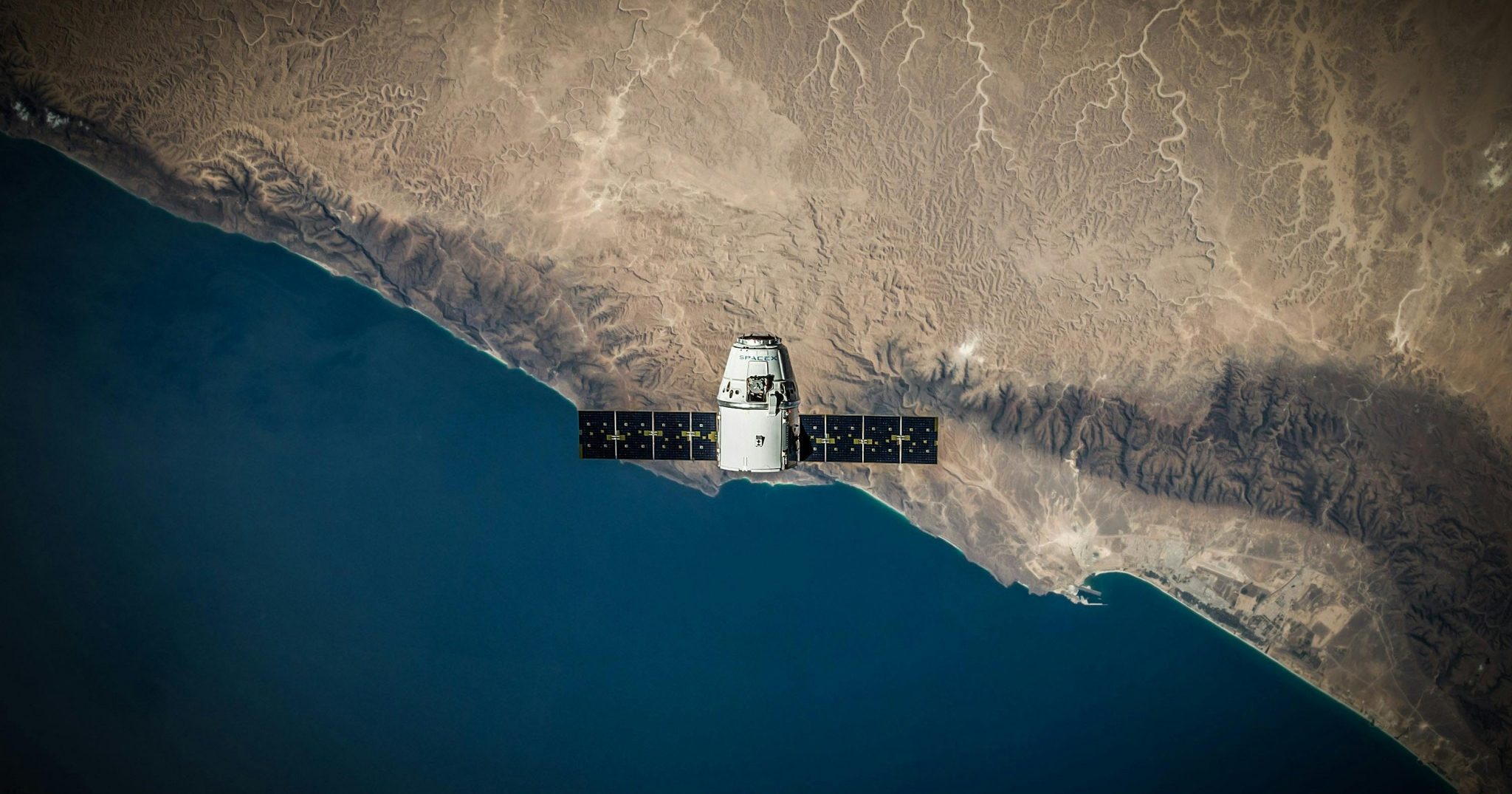How does painting satellites a specific colour help to reduce light pollution?
Every night, a growing web of satellites glimmers in the sky – but not only do they carry our GPS signals and Zoom calls, they also disrupt the very view they occupy. One of the greatest advancements in the satellite sector is Elon Musk’s Starlink, which is bringing internet connection to areas that were previously unreachable. This idea is now being copied by many startups around the world, from Eutelsat OneWeb in Europe to GuoWang in China; their futures appear to lie in the Earth’s orbit.
One major problem, however, is that light reflecting off the surface of the satellites has a negative impact on astronomical observation. In late June 2025, when the $1.9 billion Vera Rubin Observatory opens its telescopic eyes to the sky, astronomers expect that up to 40% of its images will be degraded in some way by satellite streaks.
[The new paint] is made from an innovative blend of carbon black nanotubes and special binders, which allow the coating to withstand radiation, atomic oxygen, and extreme temperatures in space
Previously, different colours of coatings have been tested on satellites to see whether they can reduce this reflection, but this method also comes with many issues, including certain paints being too delicate to be touched by the human hand after application, or the process of coating a satellite being too complicated in itself. Some experiments by SpaceX have also led to the satellites overheating.
There has been an exciting new development however, called Vantablack 310, which has been developed by researchers at the University of Surrey to combat the problems previously experienced. It is made from an innovative blend of carbon black nanotubes and special binders, which allow the coating to withstand radiation, atomic oxygen, and extreme temperatures in space. It performed far better in aging tests than competitor paints and coats – retaining its dark properties even after simulating three years in orbit. It can be applied like regular paint in cleanroom environments and handled during manufacturing, so it is much simpler to use than previous coatings. Furthermore, it is designed to absorb light efficiently without causing satellites to overheat, avoiding the specific problem that SpaceX encountered.
“The previous coating was based on a carbon nanotube structure that can’t be touched because it would collapse… We needed something that can be easily handled by engineers at their own facilities,” said Keiran Clifford, a materials scientist at Surrey NanoSystems, the University of Surrey spin-out company which developed Vantablack 310.
The next step in the rollout of Vantablack 310 is to observe how it works on the student satellite Jovian 1, which will carry a range of payloads (equipment) built by British universities into low Earth orbit next year.
What is best about Vantablack 310 is that it reduces the satellites’ brightness to around magnitude seven, meaning they are barely visible to the human eye, compared to the Starlink satellites that have a magnitude of between three and five.
Magnitude is an astronomical tool for measuring luminosity. The scale is logarithmic, not linear, and it is inverse to the object’s brightness. This essentially means that the higher the magnitude, the dimmer the object.
The next step in the rollout of Vantablack 310 is to observe how it works on the student satellite Jovian 1, which will carry a range of payloads (equipment) built by British universities into low Earth orbit next year.
“The rear of the satellite’s deployable solar panel will be coated with Vantablack 310, and we will be rotating the satellite while making ground-based measurements to observe the changes in brightness,” Keiran Clifford said. “Our coating also offers a better optical performance. Where competitor coatings reflect about 5% of the incoming light, the Vantablack 310 coating only reflects 2% of the light across the visible and near infrared spectrum.”
But what does this mean for the satellite industry and astronomical research? The obvious answer is that the scientific community can achieve more accurate images, with less aberration, allowing for better ground-based observations. This new technology creates major opportunities for the satellite industry. The lack of backlash from the scientific community could result in less regulation for the industry, meaning that it can accelerate the processes that put satellites into the Earth’s orbit. It could even be suggested that it brings us closer to the possibility of turning satellite manufacturing into mass-production.
Whether this advancement in coating is the beginning of a revolution in the satellite industry is yet to be seen, but this is certainly an innovative development worth watching as the satellite industry and astronomical research continue to evolve thanks to these technological developments.

Comments